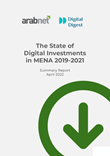The Latest Trends in Mobile Consumer from MEF's 3rd Global Mobile Consumer Survey
Back
MEF, a global community for mobile content and commerce, recently completed its third annual Global Consumer Survey for 2013. The report researches the behaviors and attitudes of mobile media users from around the globe in both developed and growth markets. The survey accounts for 10,000 respondents from 13 countries, including the Kingdom of Saudi Arabia, Qatar, and the UAE.
The survey concludes that the use of the mobile phone in buying items is now firmly established in mainstream consumer consumption with 65% of all mobile media users surveyed having purchased goods or services from their mobile devices.
Digital goods still top the list of purchased goods and services, but one fourth of the surveyed individuals buy physical and perishable goods.
The Middle East is an exception
Globally, there has been a slight fall in purchase volumes - number of purchases - from mobile media users against 2012, from 70 to 65%. In Africa, the percentage is down from 78 to 67, 71 to 63 in Asia, and in Latin America from 62 to 53. The Middle East is the exception. The research shows that purchase levels held steady at 68% across the study regions of Saudi Arabia, Qatar and UAE.
Volume goes down, value goes up
But while the volume is going down, the value of individual purchases however is going up. ‘Low spend’ purchases - under $15.99 or equivalent - stood at 43% in 2012; ‘High spend’ - over $151 - at 31%. In 2013, the former dropped to 37% while the latter rose to 39. Medium priced purchases also fell. The report attributes this change to the fact that m-commerce is becoming more established, which means that users are now migrating their spending on big-ticket physical items from the PC to mobile.

‘High spenders’ are most prolific in Nigeria, Mexico, both at 61%, and Kenya, 67%, which the report says reflects “the mobile-first ecosystems in these regions.” These three lead by some distance too. Saudi Arabia ranks second to last among the thirteen countries.
Digital content: Mobile 3.0 & Super Apps
Digital content download volumes are broadly higher in growth markets than they are in mature regions. The research shows that 39% of mobile media users in developed markets have purchased digital items. By contrast, the ratio stands at 60% in Kenya, 54% in South Africa, 52% in Indonesia and 52% in Nigeria.
But after years of growth, a fall in purchase volumes of digital content has been identified for the first time. The percentage of mobile media users that have engaged in such an activity fell from 54% in 2012 to 42% in 2013. The report explains this phenomenon as the market moves into a new phase: Mobile 3.0.
In first phase, consumers bought simple personalization products such as ringtones and text-based alerts. In the second phase, they moved to downloadable apps. But that behavior seems to have plateaued, as “there’s a limit to how many apps you can effectively use; consumers talk of the need for ‘gardening’ as they delete, re-organize and clean up their mobile desktops (...) The results of the survey indicate that consumers have gorged on apps; now, they are being more selective.”
Now, in the third phase, they are using their phones to perform online shopping while embracing a new breed of ‘super apps’, which are displacing more ‘disposable’ items. Individual song and film downloads are cannibalized by subscription services like Spotify and Netflix. With one download, Spotify replaces dozens, maybe even hundreds, of song downloads. Likewise, in gaming, immersive game play and in-app purchasing models provide months of play rather than a few days’ diversion.
This trend is not limited to the developed markets as a significant number of users in growth market regions are also moving past the premium content phase and into a space defined by smartphones and apps.
The web is dead, long live the Internet
It is quite an old debate: could the controlled, ‘native’ experience of the app compete with the open diversity of the mobile web? According to the study, yes it can. The research shows that 46% of shopping by mobile media users was done on the mobile web in 2011. By 2013, it had fallen to 25%. By contrast shopping from app stores rose from 22% to 31%
Purchases from social media sites also grew. In two years, mobile purchases from social media pages have leapt from 10% of purchases to 15% of all activity. It’s still a relatively small amount, but it represents a 50% rise. South Africans are the most enthusiastic purchasers of content by social media, with 24% of them buying through this channel. Qatar, Saudi Arabia, and the UAE stand respectively at 17, 16, and 13%.
Gaming
“When it comes to the digital lifestyle, one genre reigns supreme: gaming.” The research shows mobile gaming has become widespread across all ages and device types. 54% of all mobile media users have purchased a mobile game, and the figure rises to 59% for smartphone users. 48% of the top 400 overall grossing apps in the Google Play store are games; 52% for Apple’s App Store.
The 35s and over dominate app downloads
Gaming is most popular among the over 35s age group, with 57% reporting that they have purchased a game. That is three per cent higher than the all-ages total.
The 35s and over age group’s appetite is not limited to gaming though. They buy more of all genres as well. They download nearly twice as many news, weather, and travel apps than the under 35s.
The second screen phenomenon, Twitter leads the way
Contrary to what many predicted, mobile devices actually enhance traditional media viewing. The research showed that 89% of all mobile media users ‘use another media while browsing the web on their phone’. 35 % of them watch TV and 20 per cent use a PC/laptop. Twitter has emerged as the prominent tool for writing or reading commentary on TV shows. For example, 40% of tweets in the UK during peak TV hours are about TV.
The second screen habit is well established across all countries in the survey. But there are considerable differences when it comes to individual media.

What about the rest?
Why aren't the remaining 35% making purchases from their phones? According the report, consumer trust remains the key barrier, and it’s getting worse. The percentage of mobile media users cite trust as an issue rose from 27% in 2011, to 35% in 2012 and 40% 2013.

26% of users also said that they ‘don’t see a need’ to make a purchase on their mobile. 25% said that they were deterred by slow network speeds. ‘It’s not easy enough’ was cited by 13% of respondents.
Overall, in over ten surveyed countries, over 80% of mobile media users engage in mobile content and commerce activity, which includes browsing, research, purchasing, and banking.

Where do we stand?
A breakdown of the findings by country shows that Saudi mobile media users spend more on mobile purchases than another other country. The figure stands at 76%, eleven points above the global average, and seven points higher than the 2012 figure for Saudi Arabia.
Meanwhile, the UAE and Qatar score above the global average in their use of another phone as a second screen. In mature markets, second screening is done front of a TV or laptop. In growth markets many consumers use two phones. Both UAE and Qatar score well above the global average of 23% in this practice.
Latest Business
Intelligence Report













